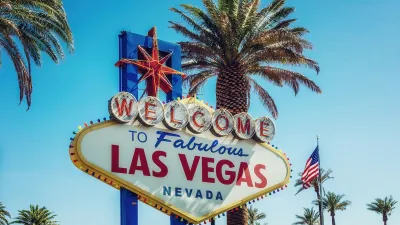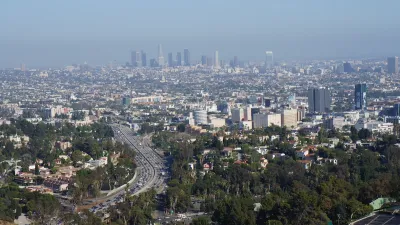Many of California’s 6 million urban trees are reaching the end of their lives. Arborists in Long Beach are turning them into useful lumber.

Arborists in California are developing a program to harvest and replace urban trees as they reach the end of their lives. As Noah Haggerty notes in an article in Governing, the project will prevent trees from falling onto and damaging homes or power lines while providing the state with a source of lumber.
Leaders at the Conservation Corps of Long Beach, which runs the current program, want to see it expand with more resources. “Right now, they’re working on and off with some borrowed equipment, but [executive director Dan Knapp] wants to see a crew of corps members dedicated to the project full time, with their own mill and kiln to dry the wood, and a storefront to sell it — all located on the same plot.” Trees milled by the Conservation Corps have already been used in homes and musical instruments.
Managing urban forests involves mapping every tree, understanding their conditions and ages, and knowing where trees are at risk from storms, pests, or encroachment, but such efforts require massive outlays of manual work. Experts say urban trees could replace as much as 10 percent of annual lumber needs in the United States, but many are currently being chopped up for mulch, reducing their carbon sequestration abilities.
FULL STORY: California Has 6M Urban Trees. What Happens When They Die?

Study: Maui’s Plan to Convert Vacation Rentals to Long-Term Housing Could Cause Nearly $1 Billion Economic Loss
The plan would reduce visitor accommodation by 25,% resulting in 1,900 jobs lost.

North Texas Transit Leaders Tout Benefits of TOD for Growing Region
At a summit focused on transit-oriented development, policymakers discussed how North Texas’ expanded light rail system can serve as a tool for economic growth.

Why Should We Subsidize Public Transportation?
Many public transit agencies face financial stress due to rising costs, declining fare revenue, and declining subsidies. Transit advocates must provide a strong business case for increasing public transit funding.

How Community Science Connects People, Parks, and Biodiversity
Community science engages people of all backgrounds in documenting local biodiversity, strengthening connections to nature, and contributing to global efforts like the City Nature Challenge to build a more inclusive and resilient future.

Alabama: Trump Terminates Settlements for Black Communities Harmed By Raw Sewage
Trump deemed the landmark civil rights agreement “illegal DEI and environmental justice policy.”

Dear Tesla Driver: “It’s not You, It’s Him.”
Amidst a booming bumper sticker industry, one writer offers solace to those asking, “Does this car make me look fascist?”
Urban Design for Planners 1: Software Tools
This six-course series explores essential urban design concepts using open source software and equips planners with the tools they need to participate fully in the urban design process.
Planning for Universal Design
Learn the tools for implementing Universal Design in planning regulations.
City of Santa Clarita
Ascent Environmental
Institute for Housing and Urban Development Studies (IHS)
City of Grandview
Harvard GSD Executive Education
Toledo-Lucas County Plan Commissions
Salt Lake City
NYU Wagner Graduate School of Public Service





























